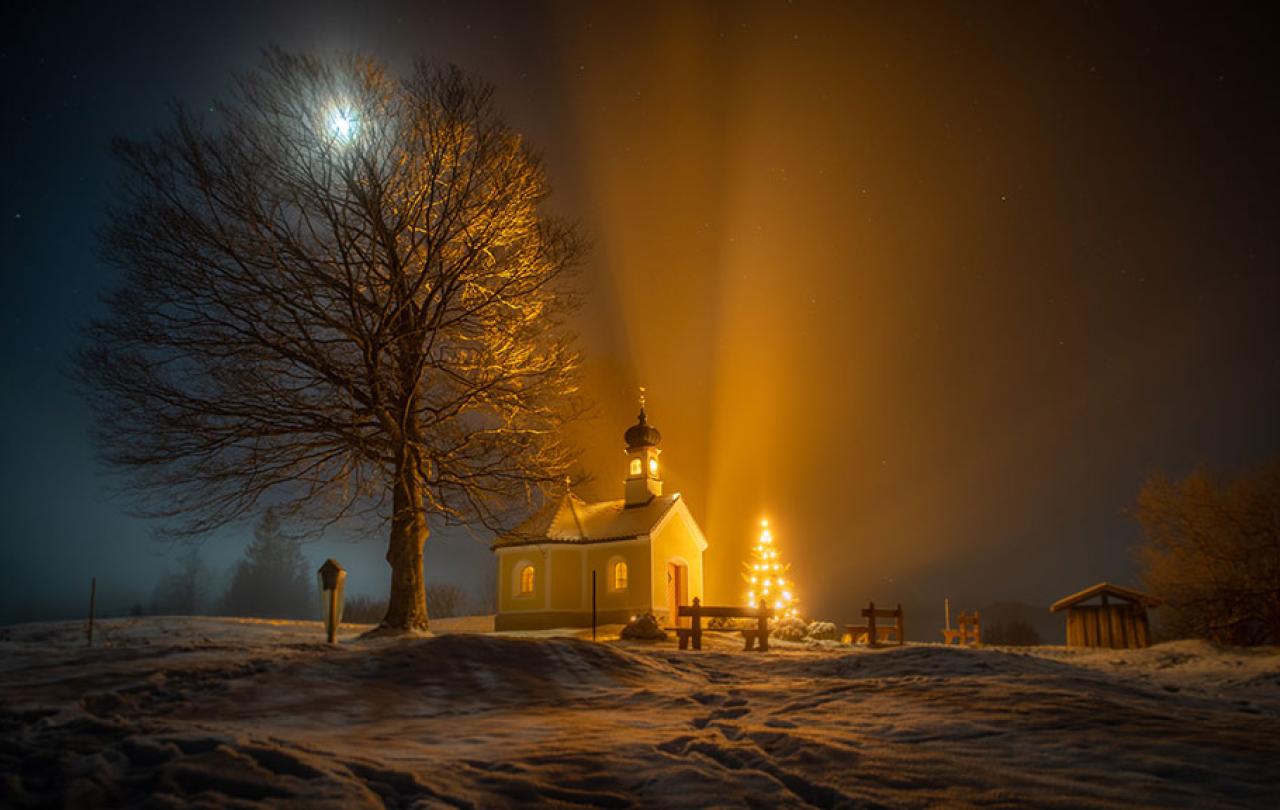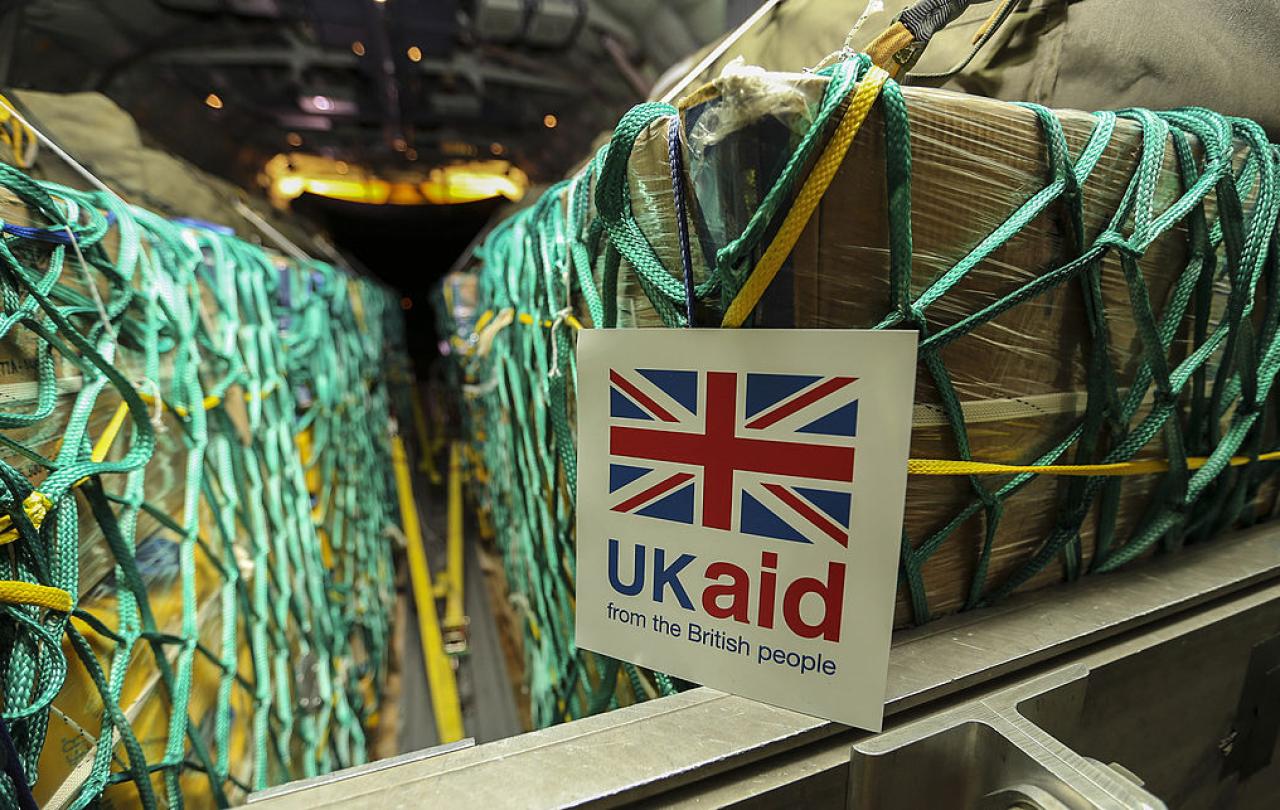
The display on my car tells me that it’s just gone 11pm on Christmas Eve, and the temperature is below freezing. It’s the sort of cold that catches your breath the minute you step outside. The trees are glittering with frost. The stars are sharp and clear in the sky. Everything feels still and clean. In the carpark, I can hear the muffled notes of the organ playing familiar Christmas carols. People in Christmas jumpers are trickling in through the main church door. I can see Santa hats, some reindeer antler headbands; some kids have woolly hats tugged down over their ears. I haven’t been to a Christmas Eve service since I was a child.
I take a deep breath and try to let go of some of the anxiety about being here. My Obsessive-Compulsive Disorder doesn’t take a break for the festive season. I have previously written about my experience with OCD: the way that it impacts my experience of faith and how it makes going to church feel difficult. I find it a challenge to sit with the doubt and uncertainty of not being 100 per cent sure that I believe in God but badly wanting to. I struggle with not knowing what verses of the Bible will be read and how I will feel. I worry about something sparking my OCD and then being held hostage by my own intrusive thoughts. This always feels worse when I’m tired, too. I am far more likely to engage with the intrusive thoughts my OCD offers up when I’m not well rested. But I’m here. Despite feeling nervous, I am happy to be here. The warm glow of the light inside the church is welcoming and the low hum of happy voices feels reassuring as everyone discusses their Christmas plans.
There is a flurry of chatter as we are all invited to wish one another a ‘merry Christmas!’ and then we fall into a restless and expectant silence as Christmas day begins.
I don’t have the usual fear of the unknown today. We are here for the carols and the watchnight service – eagerly awaiting midnight and the dawn of Christmas Day. I might not know exactly what the structure of the service will be, but I can almost guarantee that the reading will begin with words from the Gospel of Luke. We’ll be told of the census of the Roman world, and we’ll hear that Mary and Joseph would have to travel to Bethlehem. There will be no room in the inn. The baby Jesus will be born, and laid in a manger.
This story is one that I heard at childhood Christingle services. It’s the one that we were told every year in primary school with abundant colourful crafts to help us to remember the key points. I’m reminded of nativity plays – watching them and being part of them, and the slightly off-key renditions of ‘Away in a Manger’. I remember doing the reading as a Girl Guide – nervously practicing beforehand to make sure that I could pronounce all the words correctly. I remember being proud of myself for standing up and reading at all.
Armed with those memories as I cross the carpark, I know there is going to be nothing unexpected in the Christmas Eve service. My OCD still finds ways to make its presence known – I insist that I get to sit at the end of a row because that’s where I feel most comfortable. I read the order of service a few times to check that everything there is as I expect. I make some concessions to anxiety for the sake of being able to turn up at all. But I am here, and I feel safe.
The readings are exactly as I expected. I know all of the Christmas carols that we sing. At midnight, there is a flurry of chatter as we are all invited to wish one another a ‘merry Christmas!’ and then we fall into a restless and expectant silence as Christmas day begins and we wait for the minister to say a few words about what this means. I am with my family and there are familiar faces in the congregation – people I know from various places. It’s nice knowing that we are all here for the same reason and with the same intention.
There are many cheerful Christmas wishes as we leave the church and I’m proud of myself for being here. Maybe my faith is something I can reclaim from my OCD eventually, however slowly. For now, I look up to the sky as we head back out into the carpark and smile at the stars twinkling down at us. I feel perfectly fine.
Since that year, lockdown excluded, my family have been to the watchnight or the Christingle services most years. As a theology student, I sometimes feel a little self-conscious about how infrequently I go to church. I sometimes joke about being a Christmas Christian in terms of my church attendance and certainly in how I engage with the Bible. I like to read a little on Christmas day and I love watching the televised service on the BBC on Christmas morning. It’s the time of year where I am perhaps most active in my engagement with my faith. I look forward to going to the Christmas Eve church services now. It’s the one time where I don’t have to battle with anxiety about going to church and know that plenty of other people are here as infrequently as I am. My OCD comes along with me, certainly, but I feel safe to be here just as I am.





